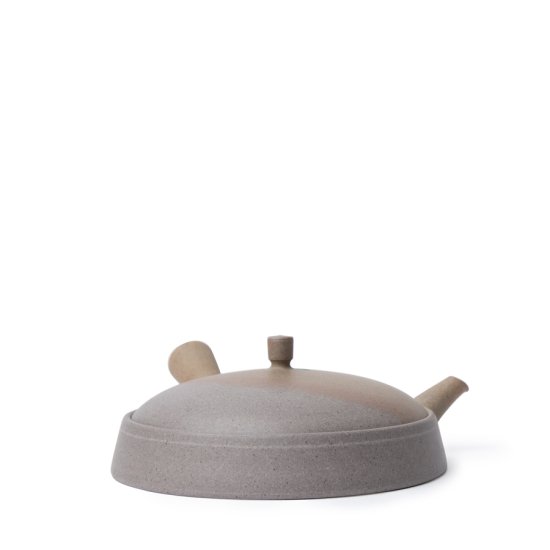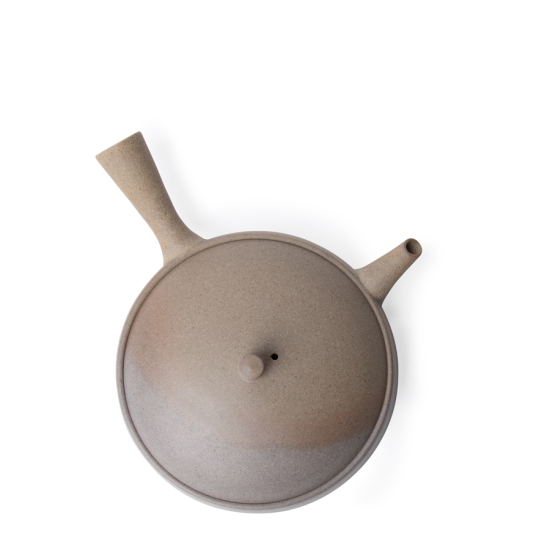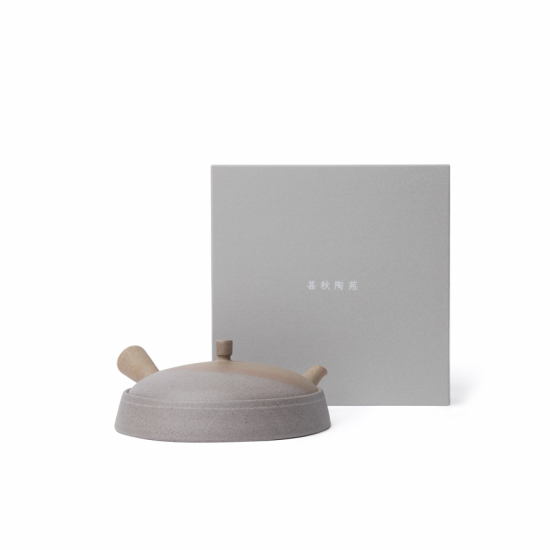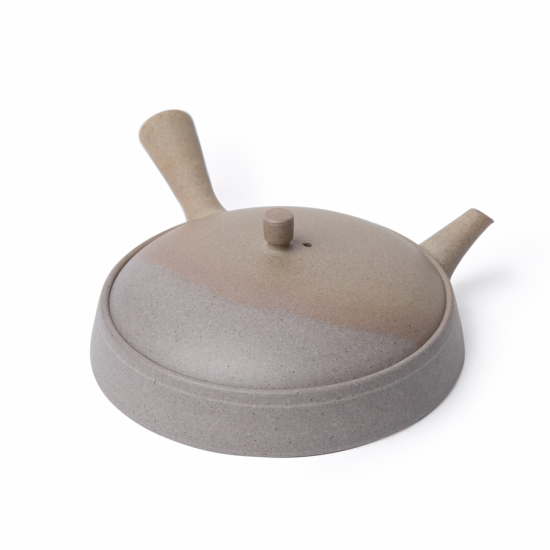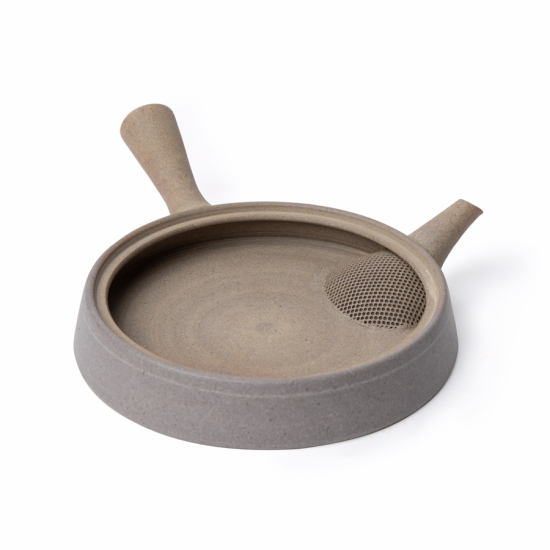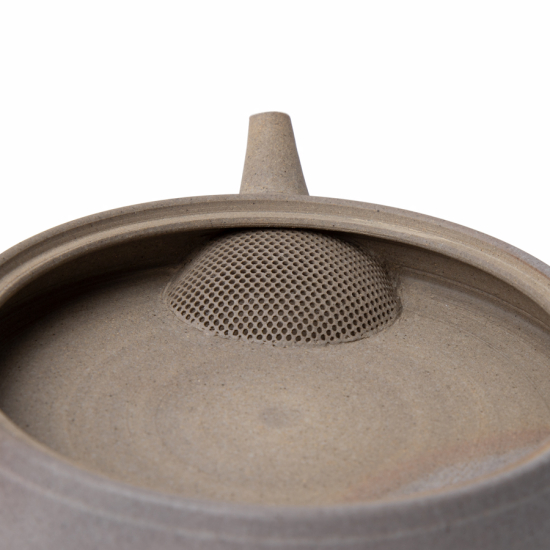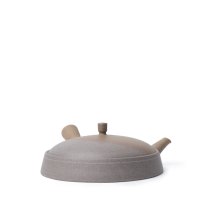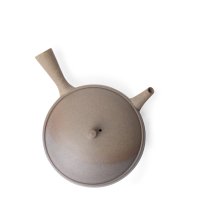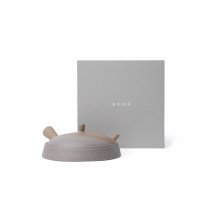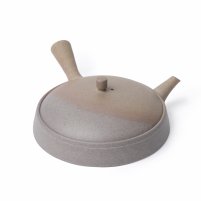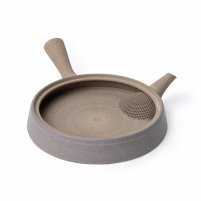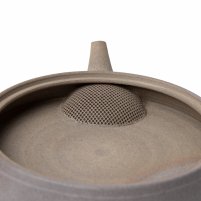As with all unglazed ceramics, wash with warm water and a soft cloth only. Do not use washing-up liquid or put in the dishwasher. Pat the outside dry with a towel and/or leave the Kyusu to air dry naturally with the lid off. If tea leaves get trapped in the filter, brush away with a soft brush.
Kyusu Tokoname
Hira Yohen L
Jinshu
SKU
4989
Yoshi En has recently grown out of Sunday Natural to become an independent premium tea store. As part of this transition, some products may still be shipped in Sunday Natural packaging.
This award-winning flat Hira Kyusu teapot by the renowned Tokoname-yaki artisan, Jinshu, has a delicate Yohen ombré finish going from grey to beige. The wide and shallow design enables tea leaves to fully unfurl, enhancing the aroma and flavour: perfect for brewing fragrant teas at low temperatures.
| Product | Side-handle teapot, grey and beige |
| Origin | Tokoname, Aichi, Japan |
| Maker | Jinshu 甚秋 / Seiji Ito 伊藤 成二 |
| Volume | 110ml |
| Dimensions | Ø13cm x H3.5cm, handle 5.5cm |
| Weight | 245g |
| Material | Ceramic |
| Strainer | Ceramic (cera-mesh) |
| Finish | Unglazed (焼き締め Yakishime) |
| Decoration | Ombré (窯変 Yōhen) |
| Production | Potter's wheel (轆轤 Rokuro) |
| Artist mark | Signature on base |
| Packaging | Cardboard box |
Each piece is handmade and unique, therefore colour, volume, dimensions and weight may vary slightly.



